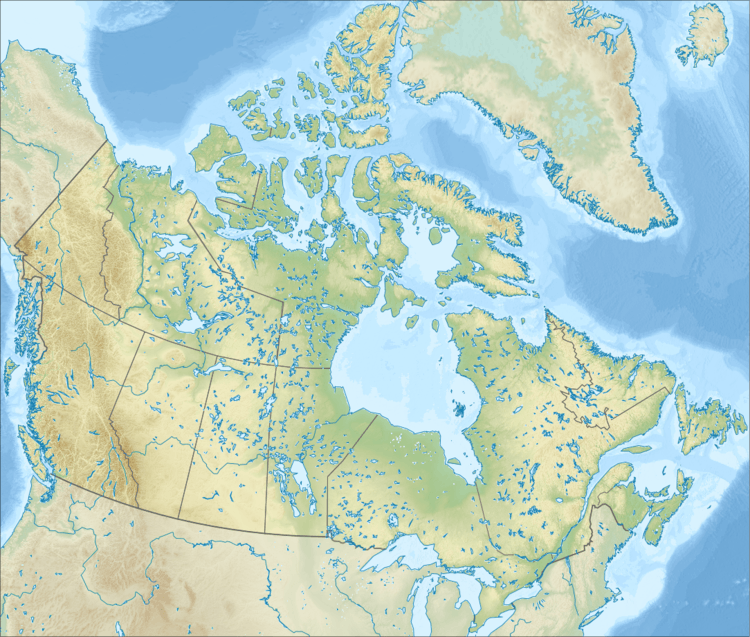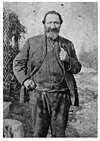Mount Erasmus
Mount Erasmus is a 3,265-metre (10,712-foot) mountain summit located in the North Saskatchewan River valley of Banff National Park, in the Canadian Rockies of Alberta, Canada. Its nearest higher peak is Mount Amery, 9.41 km (5.85 mi) to the north-northwest.[2] Mount Erasmus can be seen from the Icefields Parkway west of Saskatchewan Crossing, with optimum photography conditions in morning light.
| Mount Erasmus | |
|---|---|
 Mount Erasmus seen from the Icefields Parkway | |
| Highest point | |
| Elevation | 3,265 m (10,712 ft) [1][2] |
| Prominence | 735 m (2,411 ft) [1] |
| Parent peak | Mount Lyell (3498 m)[1] |
| Listing | Mountains of Alberta |
| Coordinates | 51°57′35″N 116°55′16″W [3] |
| Geography | |
 Mount Erasmus Location of Mount Erasmus in Alberta  Mount Erasmus Mount Erasmus (Canada) | |
| Location | Alberta, Canada |
| Parent range | Lyell Group, Central Icefields Canadian Rockies |
| Topo map | NTS 82N/15[3] |
| Geology | |
| Type of rock | Sedimentary |
| Climbing | |
| First ascent | 1950 J. C. Oberlin, F. D. Ayres[4][5] |
| Easiest route | Mountaineering |
History

Mount Erasmus was named by James Hector in 1859 during the Palliser expedition for Peter Erasmus (1833-1931), who was an interpreter and guide for that exploration into the Canadian Rockies.[1][6] Peter's skills as a Métis interpreter opened up the west for scientists, explorers, and government officials.[7]
The first ascent of the mountain was made in 1950 by John C. Oberlin and Fred Ayres.[5][4]
The mountain's name was officially adopted in 1957 by the Geographical Names Board of Canada.[3]
Geology
Like other mountains in Banff Park, Mount Erasmus is composed of sedimentary rock laid down from the Precambrian to Jurassic periods.[8] Formed in shallow seas, this sedimentary rock was pushed east and over the top of younger rock during the Laramide orogeny.[9]
Climate

Based on the Köppen climate classification, Mount Erasmus is located in a subarctic climate with cold, snowy winters, and mild summers.[10] Temperatures can drop below -20 °C with wind chill factors below -30 °C. In terms of favorable weather conditions, summer months are best for climbing. Precipitation runoff from Mount Erasmus drains into tributaries of the North Saskatchewan River.
Further reading
Buffalo Days and Nights, Author Peter Erasmus as told to Henry Thompson, Publisher Glenbow-Alberta Institute, 1976
References
- "Mount Erasmus". Bivouac.com. Retrieved 2019-01-09.
- "Mount Erasmus, Alberta". Peakbagger.com. Retrieved 2019-10-20.
- "Mount Erasmus". Geographical Names Data Base. Natural Resources Canada. Retrieved 2019-01-09.
- "Mount Erasmus". PeakFinder.com. Retrieved 2019-10-20.
- Oberlin, John C. (1951). "The First Ascent of Mount Erasmus". American Alpine Journal. Retrieved 2019-10-20.
- "Peter Erasmus". The Canadian Encyclopedia. Retrieved 2019-10-20.
- "Peter Erasmus" (PDF). City of Edmonton. Retrieved 2019-10-20.
- Belyea, Helen R. (1960). The Story of the Mountains in Banff National Park (PDF). parkscanadahistory.com (Report). Ottawa: Geological Survey of Canada. Archived (PDF) from the original on 2015-10-02. Retrieved 2019-09-13.
- Gadd, Ben (2008). Geology of the Rocky Mountains and Columbias.
- Peel, M. C.; Finlayson, B. L. & McMahon, T. A. (2007). "Updated world map of the Köppen−Geiger climate classification". Hydrol. Earth Syst. Sci. 11: 1633–1644. ISSN 1027-5606.
External links
- Weather: Mount Erasmus
- Parks Canada web site: Banff National Park
- Dictionary of Canadian Biography: Peter Erasmus